#me and anum
Text
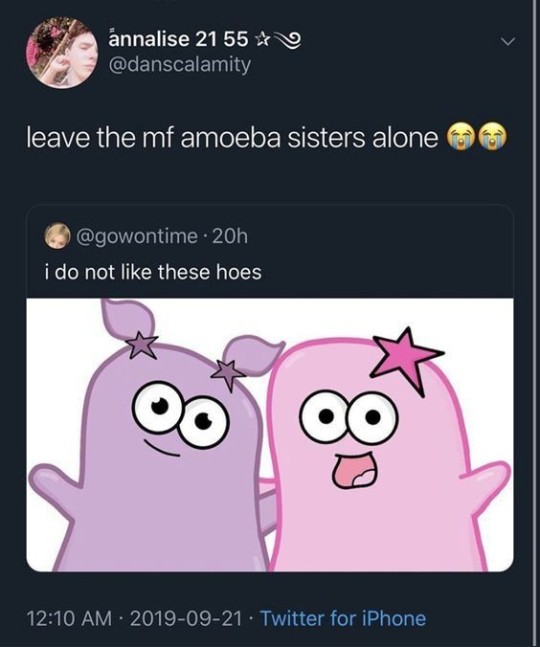
Literally Hinata and Sakura though
#HELP HELP HELP#sakuhina#hinata hyuga#sakura haruno#pro hinata#pro sakura#naruhina#sasusaku#sasuhina#trans sasuhina#team 7.1#nart#me and anum#< also#💌#summerposting#anti sns
61 notes
·
View notes
Text
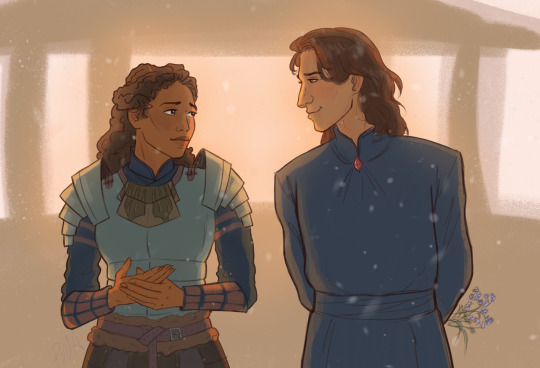

"Change, change will preserve us. It will move mountains...it will mount movements"
I don't know about y'all, everything uncle sheo said made perfect sense to me. Oblivion was a love story.
#tes#the elder scrolls#oblivion#martin septim#hero of kvatch#the champion of cyrodiil#catch me pining over hok and martin in this year 2023#don't look at my pathetic excuse for a background im lazy#look i KNOW martin looks like matt mercer here. i earased and redrew his face like 5 times. it didnt matter#anyway#the lore i have in my mind abt this....#look you dont understand!!! like 200 years later people are talking about them like:#have you heard the tale of martin and the champion? it starts with a prisoner...#and then boom it's rumarin putting together some shoddy reenactment for zora and anum-la and akhara#and none of them know#like none of them know the physical proof of the silly play is sitting right there w them 3-4 generations later#and like. just bc its always rumarin brainrot hours#his mother had to like. have been alive during the oblivion crisis. i just. know it. and like rumarin's mother just happens to be like#the main bard responsible for spreading the tale of martin and the champion#who happens to be akhara's great great grandmother#who happens to bump into this fucking altmer graverobber in a tomb#its all connected#if you read all these tags....why#pina art
973 notes
·
View notes
Text
forcing my mother to watch death note
7 notes
·
View notes
Text
need to find a therapist where I can just not talk for a year & just stare at them until I decide I trust them
#like. I want a therapist. but also there's no way I could talk to that therapist about anything that's bothering me.#so uh. how am I supposed to get better.#therapists should treat me like a wild anumal who's trust they're trying to gain#doddie redet#is gain the right word here idk
1 note
·
View note
Link
Chapters: 5/?
Fandom: Warframe
Rating: Teen And Up Audiences
Warnings: No Archive Warnings Apply
Characters: Original Tenno Character(s) (Warframe), Gauss (Warframe), Alad V, Original Cephalon Character(s) (Warframe), Arbiters of Hexis (Warframe), Titania (Warframe)
Additional Tags: Harm to Children, Flashbacks, POV Alternating, Independent Warframe, gauss gets slightly dismembered. as a treat., wukong slander, the zariman jump isn't the only thing that went wrong
Summary:
After a near-death event catapults a young Tenno from the grasp of the Second Dream, Rufus and his Gauss warframe are forced to remember their pasts and come to terms with their current selves.
#So uh. trying to post this chapter to tumblr was an.. interesting experience#apparently my wireless adapter drivers got super corrupted and stopped working so uh. mhm.#i had to reset my computer. which sucks because i lost all of my warframe screenshots that i took through steam#which is basically all of them#not to mention all the other games i had#...sigh#anyways.#enjoy the chapter! hopefully it won't take too long to get set back up and finish off the next part#a big thanks to Veri for letting me use her operator and titania. especially the titania.#coughcough foreshadowing coughcough#i hope you enjoy watching Rufus Go Through It because that isn't stopping anytime soon#poor kid lmao#warframe#warframe fanfiction#grineerios writing#operator rufus#gauss#operator toothpick#titania#cephalon anum#arbiter rex
0 notes
Text
Ok there might actually be something wrong with me.
I am hopelessly dependent on the whimsical novelty of excellent plush creatures. I may die.
GRRR GRRR GRRRR ITS MY BIRTHDAY SOON IM GONNA BUY MYSLEF SILLY STUFFED ANUMAL I DON CARE IF I HAVE SO SO SO SO SO MANY GRRR GRRR AWOOOOO BARK RNJANRNAK BARK BAKR
22 notes
·
View notes
Text
what i find really cool is that in the 'three stars each' texts, and expanded MUL.APIN (𒀯𒀳) tables, each constelation starts with 'mul' (𒀯) such as tarus (𒀯𒄞𒀭𒈾)*
but! more importantly for this discussion, the pleiades cluser (which is coincidently a part of the tarus constelation) is written simply as MUL.MUL, or: 𒀯𒀯
𒀯𒀯 has been translated to mean 'star cluster', 'many stars' or 'star of stars' depending on whose translating the text, a fact of which i could find absolutley no sources to very much to my immense annoyance but im going to keep trying at that
its also one of the closest star clusters to earth
and, just to get on the same page, the pleiades cluster, also called the seven sisters, and, for me at least, its one of the first things you learn to pick out in the night sky
just looking at it normally you can only tend to see six stars in the cluster, but on really clear nights you can even see the seventh brightesst star as well and its fucking beautiful
but anyway! back to the cuneiform!
𒀯𒀯 (MUL.MUL), or more specifically just the singular 𒀯 (MUL) is the determinative used when noting stars and planets (and star clusters) which is made up of the sign 𒀭 but just there three times
now, the sign 𒀭 is a sumerogram for either AN or DINGIR depending on your translation, but essentially equates to meaning a range of words from 'sky', to 'god/goddess'
an example of this is with Anu (𒀭𒀭) in Akkadian or Anum/An (𒀭) in Sumerian. Anu/Anum/An has a passive 'king of the gods' sort of role who is a divine representation of the sky (seeing the links?)
that example might be a biiiit too pointed actually hangon :,
Ki (𒀭𒆠) is a Sumerain goddess, sometimes depicted as a queen of 𒀭𒀭, sometimes as a sister idk it gets confusing with all the different translations. anyway 𒀭𒆠 also has the '𒀭' (DINGIR) character that preceedes her name like the other gods, which is followed by the sumerogram '𒆠' (KI) which is translated into meaning 'earth'/'land'/etc. which makes sense when you consider she is mostly translated into and described as being an 'earthly' goddess.
anyway, Ki (𒀭𒆠) ends up marying her oldest son Enil (𒀭𒂗𒆤), likened as a god of wind/air etc, who is an Anunnaki (𒀭𒀀𒉣𒈾)? but all this to say thats one of the stories of how plants and animals came about on earth
a bit less of a confusing example is probably 𒀭𒊹 (AN.ŠAR). His name contains the character 𒀭 as well as the character 𒊹 (ŠAR). 𒊹 looks a bit ominous cause its so big and just all consuming of the space which makes sense when translated to mean 'totality'
(𒊹 can also mean 3,600 - it all depends on the context though)
𒀭𒊹 is described as being a primordial god, and occupies the same role as 𒀭𒀭. sometimes 𒀭𒊹 is described/written/translated as 𒀭𒀭's father? sometimes not? idk tracking the relations of gods to eachother is hard to follow through all the different translations lol
but anyway when you have 𒀯𒀯 denoting a star cluster made up of 6 relatively easy to distinguish individual stars, you know some part of me doesnt exactly think thats a coincidence

and anyway i cant exactly remember where i was going with this whole bit of text but anyway the pleiades cluster is one of the most beautiful things in the sky (at least in the northern hemisphere, cause i cant lie, the coal sack nebula and magellanic clouds are sick as fuck but you guys dont get them up there)
*this is where i realised that tumblr is not going to let me do superscript rip x_x anyway u should go read the wikipage on babylonian star catalogues its a p good summary and has better translation lol
#anyway its 5:21am and i have a geology prac in 3 and a half hours and have not slept yet yaaay :D#👍👍
11 notes
·
View notes
Text
BOOKS I PLAN TO READ IN 2024
thanks for taggin me anum! @desi-pluto 💙
i tag: @pchita @strawhatboy @bee-fabulous @ltafushi @luciehercndale @matbaynton + anyone else who wants to do it tbh




8 notes
·
View notes
Photo

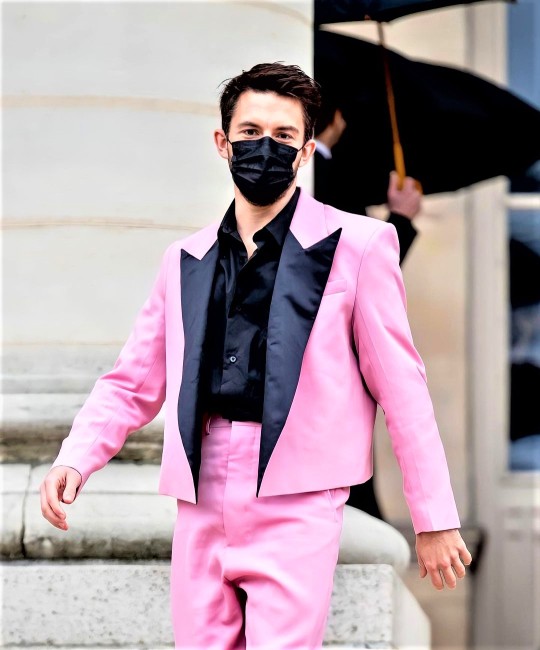



JONATHAN BAILEY
Attending the AMI Fall/Winter show in Paris (January 19, 2022) | 📸: Anum, Christian Vierig, Jana Call me J
129 notes
·
View notes
Text

This year I set myself a goal to complete FIFTY books, and keep a record of what I read including what I thought about/learned from each book in terms of writing techniques, story structure, or just wrt developing a better idea of my own writing goals and tastes. I demolished this goal before June, which I am extremely pleased about, and I am still in the process of demolishing this goal, having completed another three books since I last updated this list a week or two ago!
The aim of this exercise was the following:
Re-establish reading habit, and improve attention span.
Re-Learn how to write down my thoughts about books, even if they are uncritical observations, opinions, or ideas inspired by what I'm reading.
Cover as much ground as possible as fast as possible, over a wide range of topics and genres (audiobooks and written books both count!)
Book quality was not a factor I considered when picking what to read - if it fell into my lap I read it and wrote down my thoughts, and let me tell you I definitely read some sub-par books in 2023. I read some really great ones too! But when one is not picky you kinda get what you get, and I think next year I might be a bit more discerning/tactical in my approach. I also did NOT go to tik tok for book recs because I don't believe in tik tok the same way some people don't believe in the spherical earth. I picked books based on word of mouth, recommendations spoon fed to me by via the audible algorithm (still evil, but the devil one knows and all that), and via on-the-ground perusal of book shops and stacks and the 'recently returned' feed on the libby app. Despite this, I know some booktok faves managed to find their way onto my list. I am working very hard not to acknowledge this, please don't draw undue attention to it 😂
Speaking of libby, my hold list also grew astronomically this year. My poor local library is limited, and I have been waiting for a few books I really want for MONTHS (riyria revelations v1, the colour of magic, the king in yellow...). I was able to borrow as many cosy murder mysteries as I wanted, though, because small town libraries seem to have 10000000 of those available per patron per anum. Unfortunately, I have discovered I am neutral at best about this genre. 😔
The best books I read this year across all genres and in no particular order were as follows:
The southern book clubs guide to slaying vampires - Grady Hendrix: this appealed deeply to my love of and familiarity with horror movies of the 80s-2010s. It had an innovative and articulate approach to themes like powerlessness, rage, desperation, boredom, inequity, and guilt - at least compared to everything else i read this year. I noted paralells between this and Ira levins stepford wives, much of Stephen kings horrific americana, plus some other books and movies which I alluded to in my notes but for some reason I didn't write down (foolish 😓). Some big TWs would apply for this one, however.
The day of the triffids - John Wyndham: genuinely I do not know how I enjoyed this so much. I had no business enjoying this so much. Despite being from 1951, parts of this felt very contemporary in style and concept, tho sometimes dubious ideas about humanity or society would appear in the text as if they were a natural fact. Nevertheless, I went out and read another Wyndham book straight after, because there was also some beautiful prose in this, and it's always interesting to personally experience the origin of so many tropes which are like. Ubiquitous now.
Uglies series - Scott Westerfield: another unexpected winner. I never read these books as a teen and I consider that a good thing because they would have made my little adolescent brain crazy. These books are crammed with paraphernalia which would have been the coolest shit to a 13 year old me, all masterfully concealing themes about beauty and social hierarchy and state surveillance in a way that seems exponentially more relevant now than it did nearly 20 years ago. I was so impressed with these books honestly, and the way this author used language was something else. I didn't even notice what was going on until it was pointed out by the story, having simply resigned myself to reading an averagely written book full of weird dialect quirks just because it was pitched at a teen reader. I was way wrong, and ive never seen such an elegant example of style justified by the narrative itself. I really wish I could do something that skillfull in my own work!
Braiding sweetgrass - Robin wall Kimmerer: gorgeous gorgeous gorgeous. a sensory joy. Seriously beautiful, and surprisingly emotionally intense. I had to read this in short bursts because it made me feel too much about trees.
Boy Parts - Eliza Clark: this one made me feel things I haven't figured out yet. Unlike everything else ive ever read, I could have believed that I wrote this, and that recognition of the self was horrifying because there wasn't a moment in the story i didnt struggle to reconcile revulsion with the exquisite beauty of it all. Easily the scariest book of the year, Easily the one i have thought about the most, Easily the biggest TW of my 2023 recommendations. I'm gonna be defining my own work against this for at least the next six months, or until I have matched it in calibre/distanced myself from it so completely that I am forced to recreate myself and my art anew.
In 2024, I plan to narrow my scope more and focus back on horror, fantasy, and non-fiction. Based on how good I was in 23, I'm going to aim for 65 books in 2024!!!
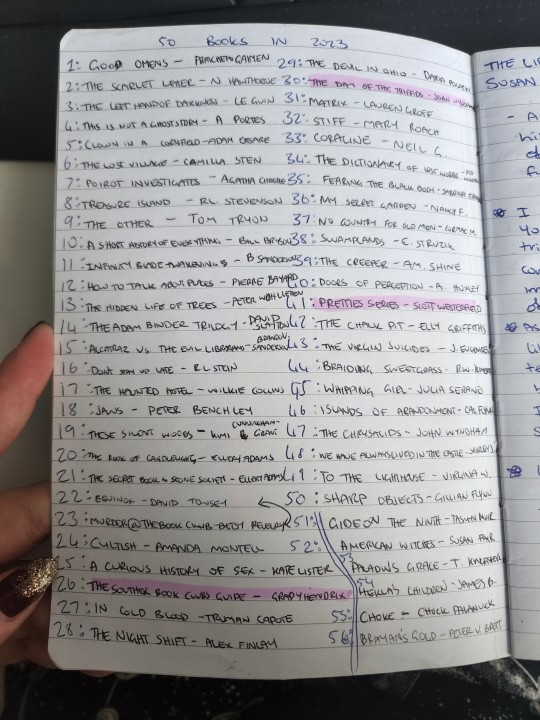
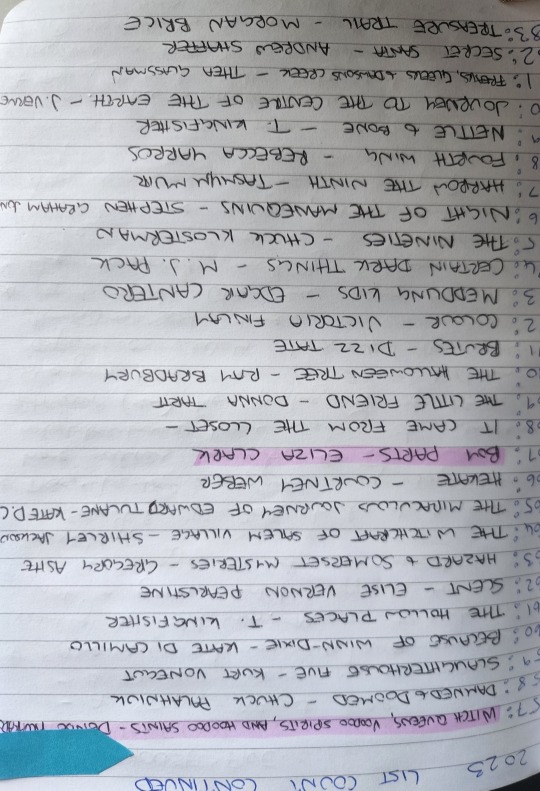
9 notes
·
View notes
Note
was Anzû/Imdugud ever considered a deity with a cult ?
I'm pretty sure they existed in the same niche as apotropaic creatures like lahmu. There are theophoric names invoking anzu in Early Dynastic or Old Akkadian sources from Adab (source, p. 6) and there were apotropaic images of anzu in multiple temples, as late as in the Neo-Assyrian period, too (source, pp. 107-109), but that doesn't seem to be enough to speak of divinity in the proper sense.
N. Veldhuis in Religion, Literature, and Scholarship: The Sumerian Composition Nanše and the Birds stresses that anzu cannot be considered a deity and pretty clearly wasn't treated as such ex. by compilers of god lists (pp. 29-30). Even the theophoric names are not really evidence since they most likely compare the bearer, or in some cases a deity (ex. Sud-anzud, "Sud is like an anzu"), to an anzu due to the bird's presumably well known role as a symbol of might. There are no names designating the bearer as a "servant" of anzu despite this being a common structure of theophoric names (p. 32), which seems like a strong argument to me.
Anzu has a variety of distinctly positive roles in literary texts, but the only time I can think of when the bird acts sort of like a deity would be Nanshe and the Birds (which is very fun and should be more commonly discussed) since Nanshe tasks an anzu with determining the fate of other birds in this composition.
There's also a goddess named Nin-anzu (or perhaps Eresh-Anzu, NIN might be a logogram here), "lady anzu" (there's no genitive suffix so I presume she is a lady who is an anzu, not a lady -in charge of- anzu?) in the entourage of Nanshe's daughter Nin-MAR.KI in An = Anum. However, I do not think she appears anywhere else and I have no clue if her existence might have any broader implications.
8 notes
·
View notes
Text
My friend who's like an older sister to me talks really properly even in memes(like saying 'fr fr' in full)while i have no manners and throw slang into everything and i think that's very funny and beautiful.This is literally us

8 notes
·
View notes
Text
The Children of Hecate:
Overview: Kar is technically the first but not the only "children". One of the abilities Hecate has in the Mignolaverse is to confer vampirism-- but not all vampires come from her. The other two children are just that-- mortal humans turned into vampires. Kar is only one who can claim chthonic heritage.
Given how much affection she gives Girescu, it is possible there is some level of care, perhaps Hecate would of course favor those who worship her, so it's understanding Girescu and Bathory were favored. It could simply mean Kar was still as much a defiant child as she is an adult and not hanging on her mother's word every word ; making their their relationship tense. However I do believe all three were not truly children to loved and cared for in the end-- they were intended to be weapons, engines of her wrath upon the mortal realm and her love could simply be a form of grooming/gaslighting them to the roles she desired of them.
It is interesting to note all three were used as vehicles for an attempted resurrection and all failed. Using Girescu in 1997, Bathory in 2003, and one final attempt with Kar in early 2005.
Makaria Polyditos/Kar Hem, the Lesser Dragon:
Born of a fusion of her own lifeforce and magic, the Promethean flame, and the egg of final Ogdru Hem, Makaria was first of her children. Bound in a body that upset cosmic balance, in the end it was her intent to leash the last of Hem to use as her own weapon upon her nonbeleivers. At least until the Priests of Anum sealed her away. It is unknown if Hecate made any actual real attempts to save or find the child, left to be forgotten by everyone. Until the 1989 expedition that recovered her sarcophagus, and was in Bureau custody. Out of all three she is one who is most defiant, constantly at odds with her mother, which could explain why is not as favored as the other two, at least until their deaths.
Erzsebet Ondrushko, Countess Bathory:
[Note: Please let me say as the writer I personally believe the historical Erzsebet Bathory was a much maligned woman and believe it was likely a fictional account created in a conspiracy against her for her wealth. However Erzsebet Ondrushko, Countess Bathory (as she called in Blood & Iron) is a fictional character and being treated separated from the historical woman. I trust my followers can understand and think critically when handling real life people, I just wanted to be clear on that.]
Erzsebet Bathory was introduced to the cult of Hecate in her lifetime (perhaps through Mikhail Girescu), becoming a high priestess in the cult centered in Hungary (Now modern-day Slovakia). At some point in the 1600s she was chased out of her lands, and sought refuge in Transylvania, hunting her prey until 1933.
A young Trevor Bruttenholm was part of the 1939 investigation, confronting the countess and eventually luring her to her supposed death (by forcing her out through a window into the sunlight; oddly mirroring what his son will do to Hecate in 64 years later.)
In 2003 she is resurrected with her mistress in a mansion in the Hamptons (the NYer/LIer in me is slightly annoyed at vague detail) purchased by Hotelier Oliver Trumbolt to turn into a hotel-- Trumbolt unfortunately being killed as part of the ritual. (I will go more in depth in another post about this mission in another post soon as it pertains to my muse's story directly.)
Vladimir Girescu:
[Note: I'd recommend scouring the Wiki or reading Wake the Devil for more information, I've cut it short for brevity.]
Vladimir was born into a noble family in the late 1400s (what is now modern day Romania). His father was an adherent to Hecate after buying her off a Greek fisherman in 1492, and restoring her to life. He was given the gift of vampirism; and when Vladimir drowned in his youth, she restored him to life, granting him the same powers, and started calling him her son.
For centuries Castle Girescu was the center of blood and death; Vladimir taking no less than six brides. In the 1700s he would take the role of mercenary under king George III fighting against the colonists in American Revolution. He would continue to fight wars for the English until the 1800s, where he was forced back to his home country until 1944. The Sonnerad Society recruited him for Project Vampir Sturm, with hopes of creating vampire soldiers for the Reich. After meeting the Fuhrer, he and his wives were sent to Dachau to be killed: stakes, beheaded, and eventually burned. His corpse managed to survive the betrayal and smuggled out of the country until discovered in a wax museum in New York in 1997.
Girescu and his "mother" were resurrected in his home castle by Ilsa Haupstein in hopes of bringing back the army of vampires for Rasputin, only to be destroyed by Hellboy. His body would fall into BPRD custody, but once again stolen while in temporary storage at the airport in Burcharest.
2 notes
·
View notes
Text
What Are Fuath?

Fuathan (Fuath singular) have two different meanings associated with the name.
For one meaning, the name represents one singular type of creature. This creature has the shape of a man, but webbed hands and feet and a golden mane, and was popularized by folklorist John Francis Campbell in his book Popular Tales of the West Highlands.
“From all these it appears that the Fuath in Sutherland is a water spirit; that there are males and females; that they have web-feet, yellow hair, green dresses, tails, manes, and no noses ; that they marry men, and are killed by light, and hurt with steel weapons; that in crossing a stream they become restless.
From the following stories it appears that they are hairy, have bare skin on their faces, and have two large round eyes.”
Popular Tales of the West Highlands” by John Francis Campbell (1862)
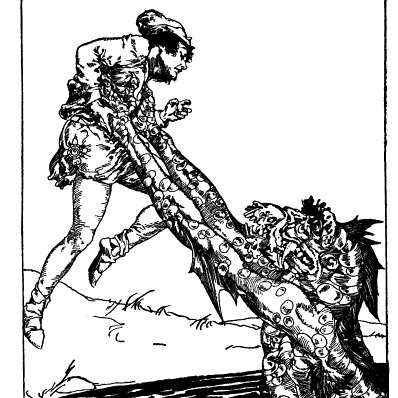
(A “fua” of the river grabs hold of a human.—Illust. Willy Pogany. Colum, Padraic (1916). King of Ireland’s son)
The second, and slightly more popular meaning, is that word as a category for several different types of water-type creatures with evil intent.
“Fuath: a spectre, a kelpie, a demon, a water-fiend frequenting glens, rivers, and waterfalls.”
Carmina Gadelica, Volume 2, by Alexander Carmicheal, [1900]
All it takes to be placed in the category is to be a water-type with evil intent; the hint of which is actually right in the name, which means “aversion,” or “hatred.”
The major differences to these meanings even caused a bit of debate between folklore writers.
“The attributes of the Fuath are different in different tales, and Mr. Campbell (Tales of the West Highlands, ii. 191) has fallen into the error of conjoining attributes ascribed in several stories, and representing the Fuath as a water spirit, having web-feet, tail, mane, etc.”
Witchcraft & Second Sight in the Highlands & Islands of Scotland by John Gregorson Campbell (1902)
Going by the second meaning, everything from a kelpie to certain water sprites may fall under the “fuath” category. In this way, it can be helpful to describe a creature in a story without knowing the exactly type. For example, if you say you were attacked by a fuath, people would know you mean an evil water-type creature.
In many stories, it is common for a person to be attacked by a fuagh, only for their dog to leap to protect them. In some stories, the dog wins but loses all of its hair.
“The dog at last disposed of the Vaugh , but he lost all his hair in the scuffle . The poacher became grey from terror in a single night , and we have reason to believe he did not again visit the pools of the Shin after dusk for any illicit purposes.”
THE VAUGH , THE POACHER , AND THE DOG from The Folklore Journal, Volume 6; Volume 21 By Folklore Society (Great Britain): The Folklore of Southerlandshire
Sadly, it is common for the dog to die the next day in stories.
Like with most fairies, they are affected by iron, but interestingly, some area also harmed by sunlight.
“One of John Ray Bethune’s forbears, who lived at Inveran, laid a bet that he would seize the kelpie of Moulinna Vaugha, or Moulinna Glannan, and bring her bound to the inn at Inveran.
He procured a brown , right-sided maned horse, and a brown black-muzzled dog, and by the help of the latter, having secured the Vaugh, he tied her on the horse behind him, and galloped away. She was very fierce, but he kept her quiet by pinning her down with an awl and a needle .
Crossing the burn at the further side of Loch Migdall, she became so restless that he stuck the shoemaker’s and the tailor’s weapons into her with great violence .
She cried out, “Och ! och ! cur anum am minme crourm ; L ‘ cum asum au ‘ hail chiul rouach,” which is, being interpreted,
“Pierce me with the crooked awl, but keep that small sharp needle ont of me.”
When he reached the clachan of Inveran, where his companions were anxiously waiting for him, he called out to them to come out and see the Vaugh. Then they came out, with lights, but as the light fell upon her she dropped off, and fell to earth, like the remains of a fallen star, a small lump of jelly.
[ These jellies are often seen on the moors , and are called “dropped stars.” ]
The Folklore Journal, Volume 6; Volume 21 By Folklore Society (Great Britain): The Folklore of Southerlandshire
So, putting this all bluntly, a fuath is commonly a category of water fairies that have a tendency to be evil, but some people use it to describe a single creature type.
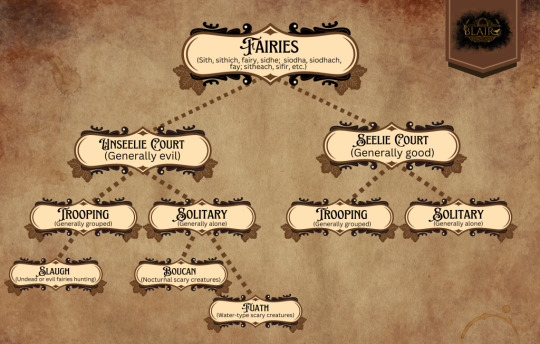
#fuath#fauth#scottishfolklore#scottish folklore#scottish myths#scottish mythology#FairyBasics#fairybasics#FairyTypes#fairytypes#fae#faerie#fae folk#fairies#fairy#unseelie#unseeliecourt#ScottishFolkoreBasics#MiscScottishFairies#WaterTypeFairies
31 notes
·
View notes
Note
Wait, Lyle was from the earlier Anumal Crossing games?? I thought he was introduced in AC: new leaf?
he was introduced in wild world and he made me cried as a child because he wouldn't stop trying to sell me deals i didn't want
6 notes
·
View notes
Text
Hello, everyone: the podcast is HERE!
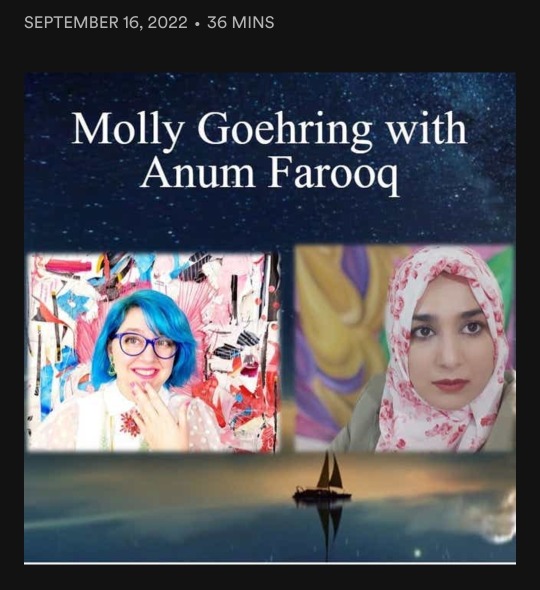
I was fortunate enough to sit down and have a chat with the fabulous Anum Farooq about my work, my life, and all of the ups and downs of the creative process.
I am also forever grateful for the opportunity to discuss my personal experience with mental health, particularly how my psychiatric hospitalization as a teenager helped me pick up my sketchbook and start creating. It is my hope that having these kinds of vulnerable conversations can lead to more acceptance, less shame, and a better understanding of how our actions can effect one another—for better or worse.
...But it's not all heavy stuff! We also talk about color. Contrast. Creation. I am very embarrassing about my love of Francis Bacon, and I get sentimental about the many people who have, as I saw written somewhere I can't quite recall, "loved me into existence."
So, if you like, give us a listen!
(Also available on Amazon)
#art#artists on tumblr#artists on instagram#art inspo#artist#interview#artist interview#abstract artist#contemporary artist#mollypaints#spotify#paint#painting#abstract art#drawing#female artist#woman artist#podcast#artist talk#new artist#emerging artist#podcast interview#mental health#mental wellness#mental health awareness
21 notes
·
View notes